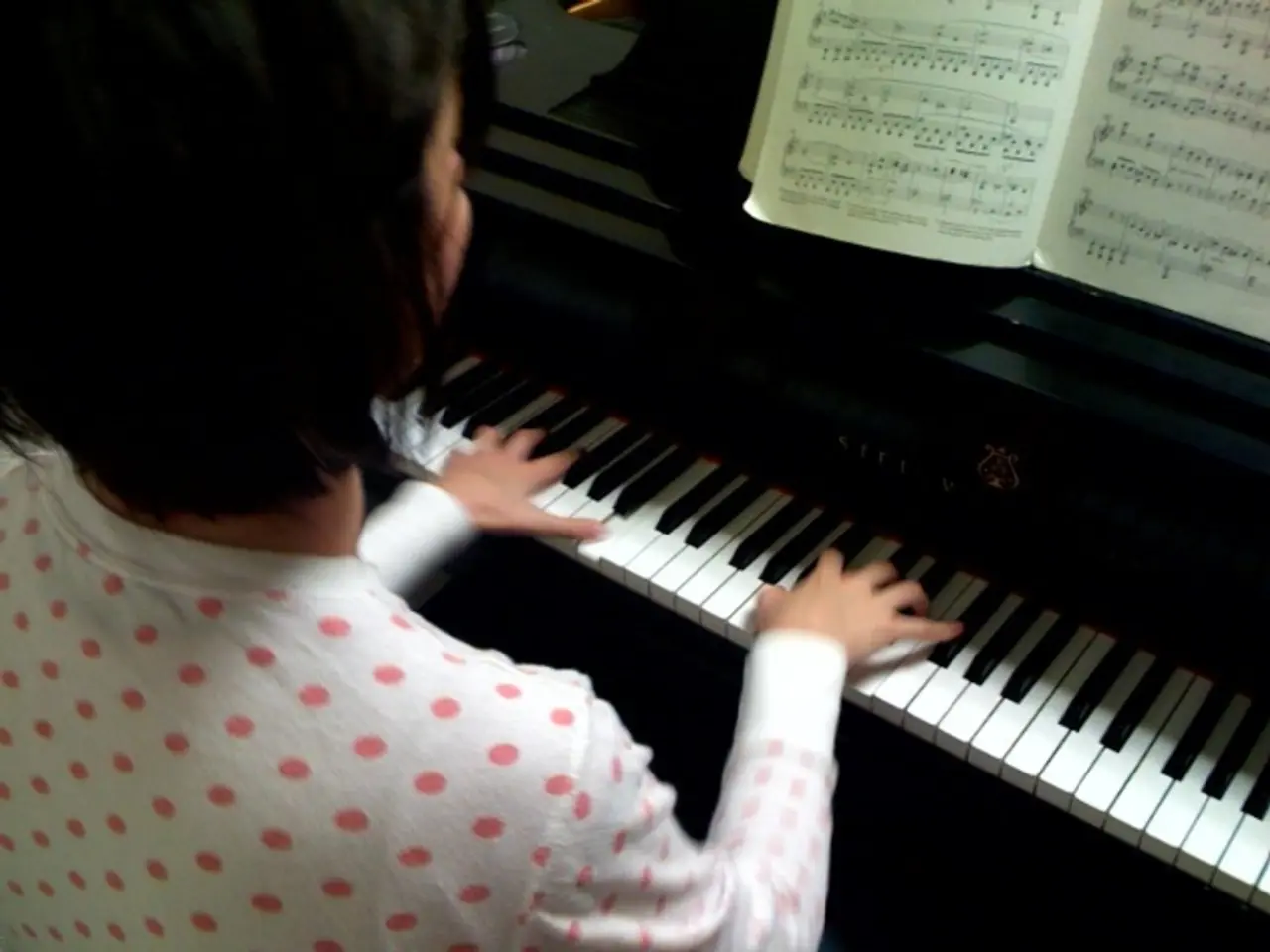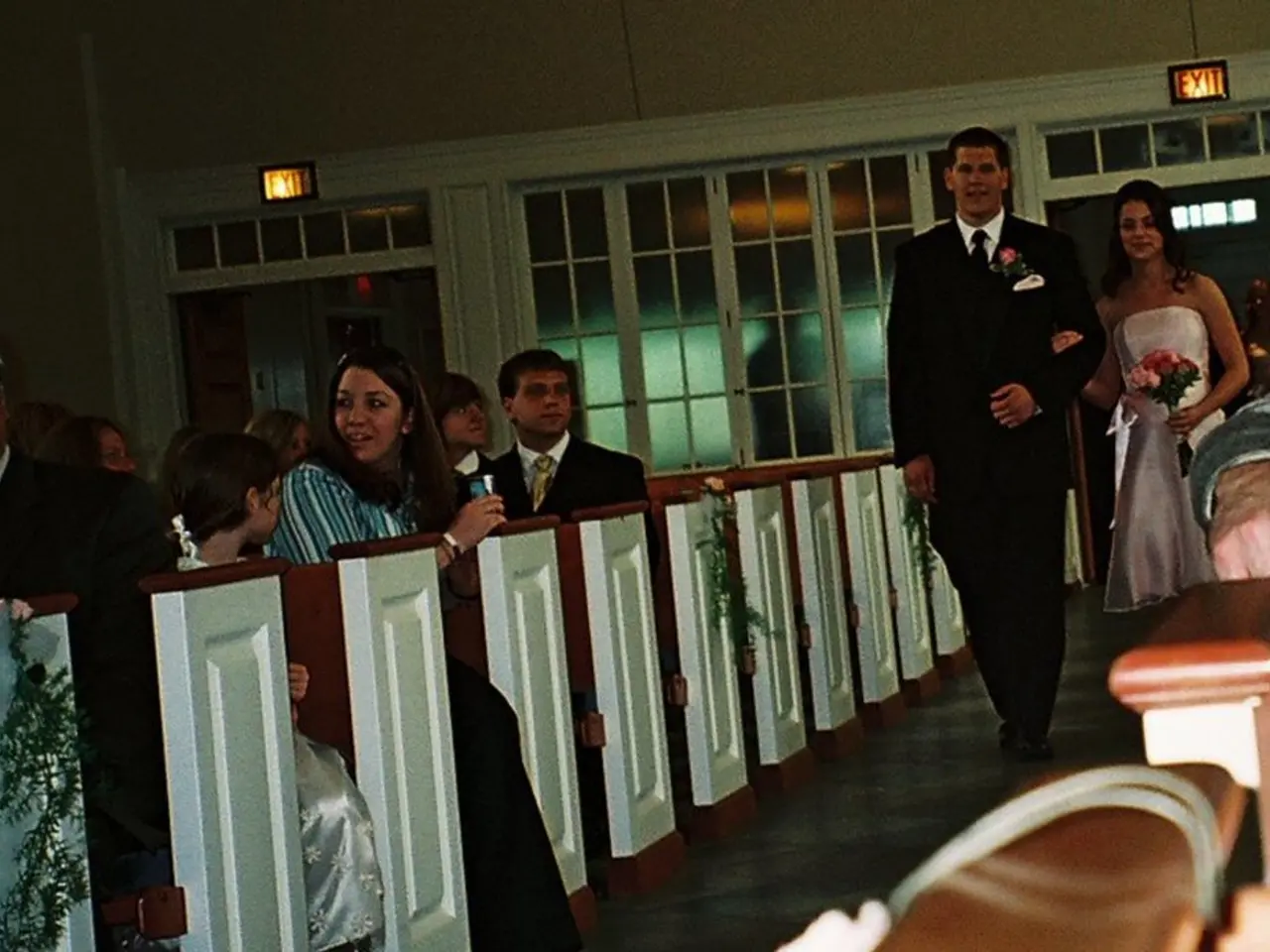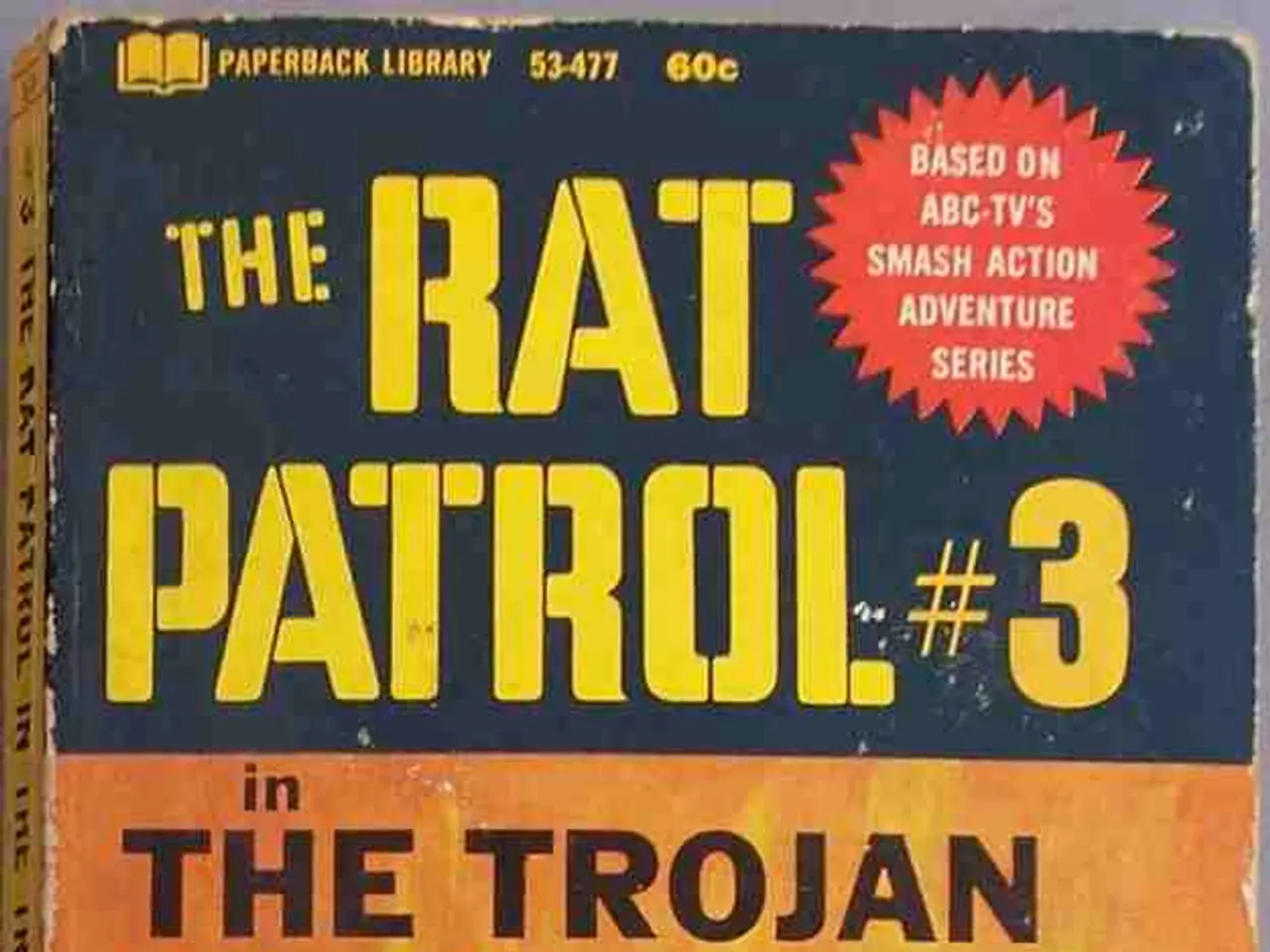Exploring Music Theory: Distinguishing a Sixth Chord from a Thirteenth Chord for Musicians
In the world of music, chords play a significant role in creating harmony and tension. Two such chords that stand out are the 6th chord and the 13th chord.
The key difference between these two chords lies in the presence or absence of the 7th. A 6th chord does not include a 7th, while a 13th chord always does.
A 6th chord is a basic triad (major or minor) with an added sixth interval above the root, creating a smooth, mellow, and jazzy extension to the triad without introducing tension. For example, C6 = C-E-G-A, and Cm6 = C-Eb-G-A.
On the other hand, a 13th chord is a fully extended chord that includes the seventh and extends to the 13th scale degree. It carries dominant function tension and often resolves to the tonic chord. A G13 chord, for instance, typically contains G (root), B (3rd), D (5th), F (b7), A (9th), C (11th), and E (13th).
6th chords are common in jazz, pop, and rock for adding warmth and color to basic triads without overwhelming the harmony. They offer a smooth, consonant quality that fits well in many musical contexts. In contrast, 13th chords are heavily associated with jazz and blues, where they serve to add tension and sophistication within chord progressions, especially dominant chords gearing toward resolution. However, they also appear in rock and pop genres, where artists like Stevie Wonder and Jimi Hendrix have used such extended chords to add harmonic richness and interest.
Remember, the numbers in this article refer to scale degrees in a major scale. So, the 6th scale degree is the same note as the 13th when counting up the scale. For example, in the C major scale, the A note (La) is the 6th scale degree.
In summary, the 6th chord is simpler, adding just a major sixth to a triad, and is used for color. The 13th chord, on the other hand, is a complex extended chord that includes the seventh and multiple extensions for harmonic depth and tension, widely used in jazz and related styles but also found in popular music. These chords expand our harmonic vocabulary and expressive palette, allowing us to create more intricate and beautiful music.
[1] "Chord Progressions: The Art and Science of Harmonic Modulation," by David Loeb, Oxford University Press, 2014. [2] "The Jazz Chord Book: 2000 Jazz Chords, Their Theory and Application," by Mark Levine, Sher Music Company, 2005. [3] "The Complete Guide to Chord Theory," by Steve Koven, Mel Bay Publications, 2007.
Entertainment and music intertwine as both a 6th chord and a 13th chord serve as significant instruments to create varying levels of tension and harmony, enriching musical experiences. For instance, a 6th chord contributes to the mellow and jazzy tones found in popular music genres like jazz, pop, and rock, while a 13th chord adds complexity and sophistication, particularly in jazz and blues. These chords, derived from music theory, broaden our harmonic toolkit and offer the ability to craft more intricate and beautiful pieces of entertainment.







